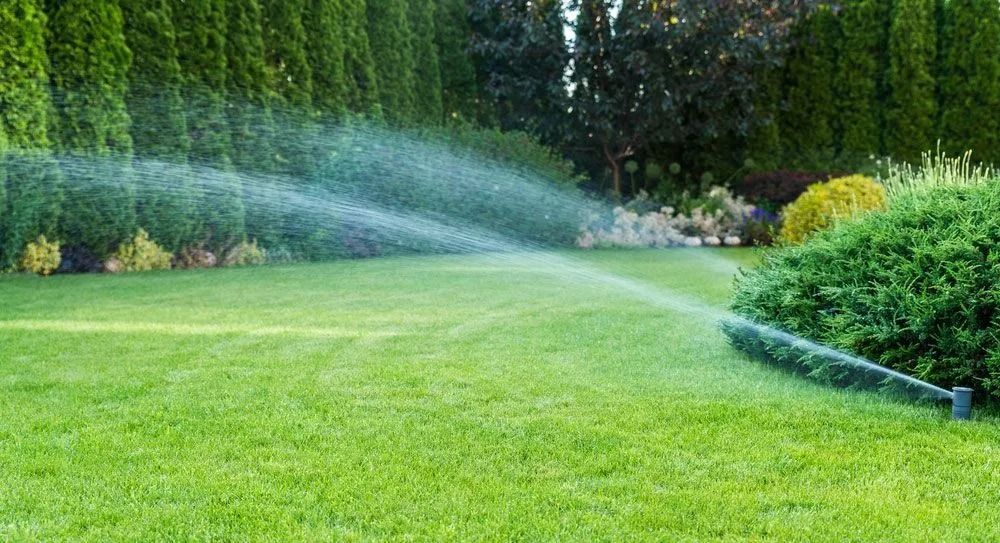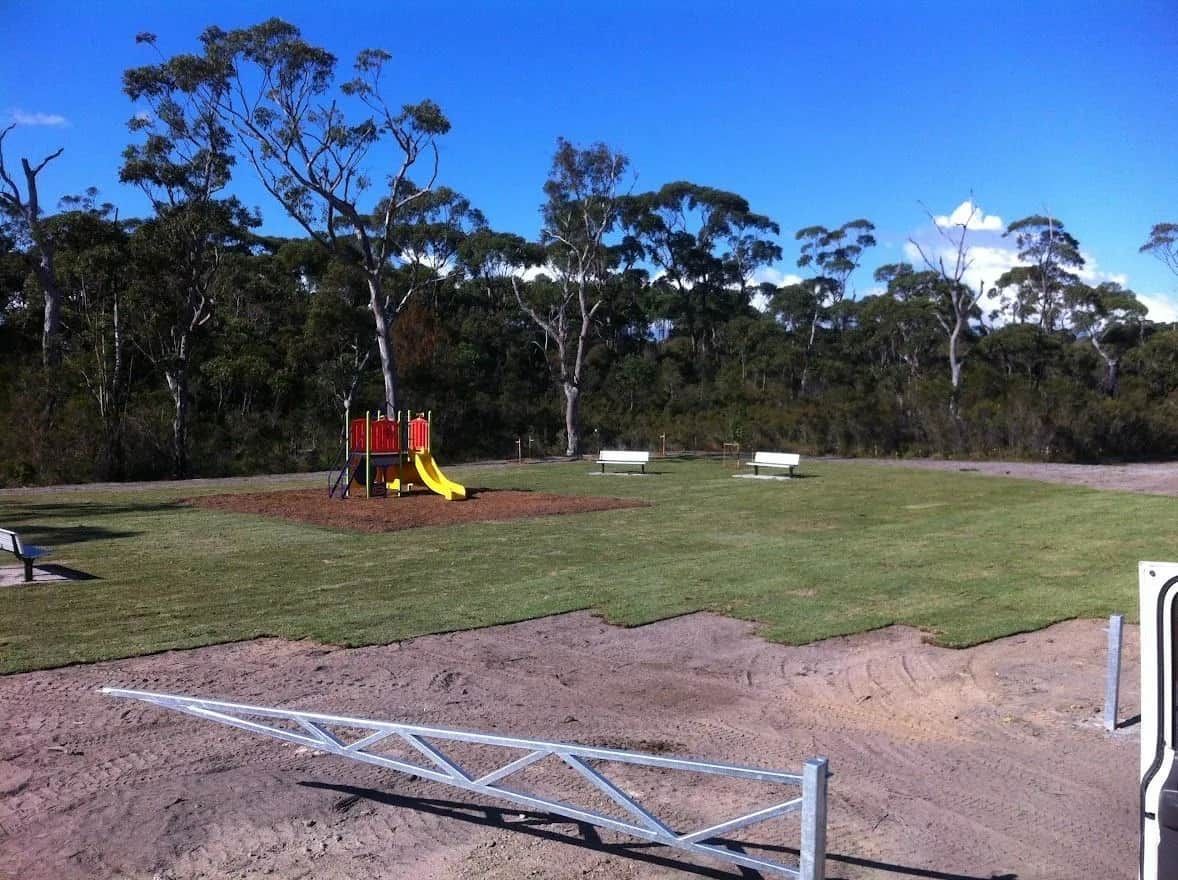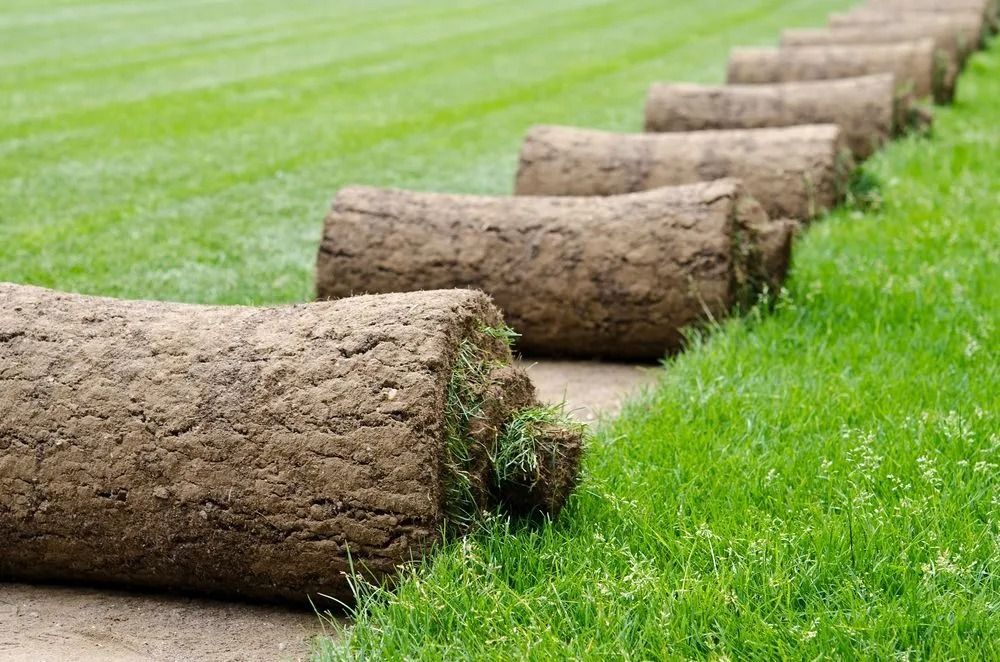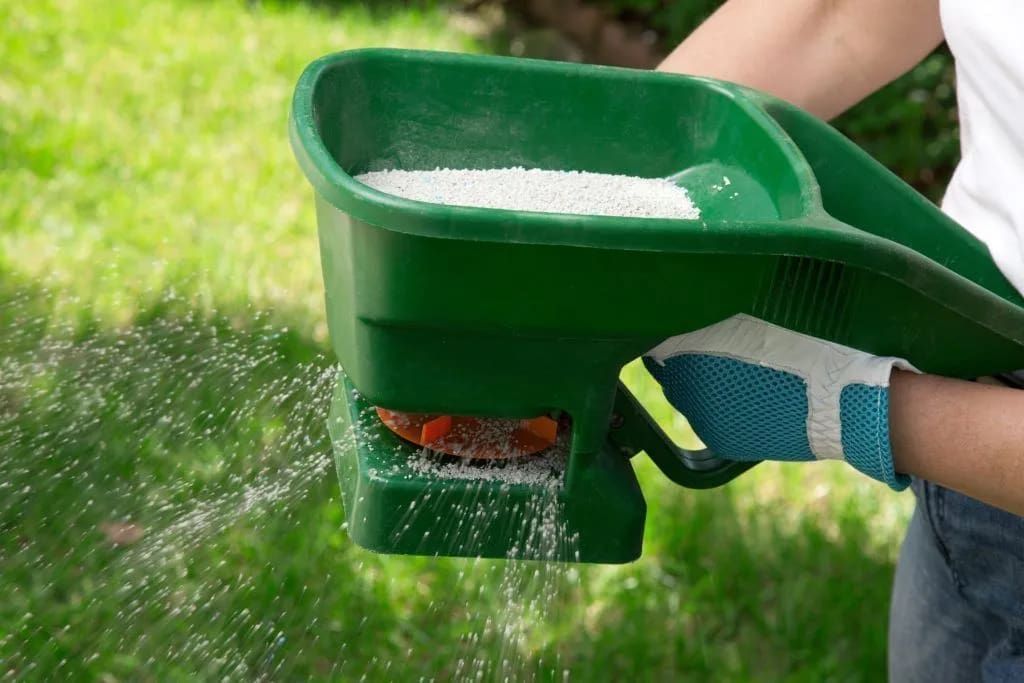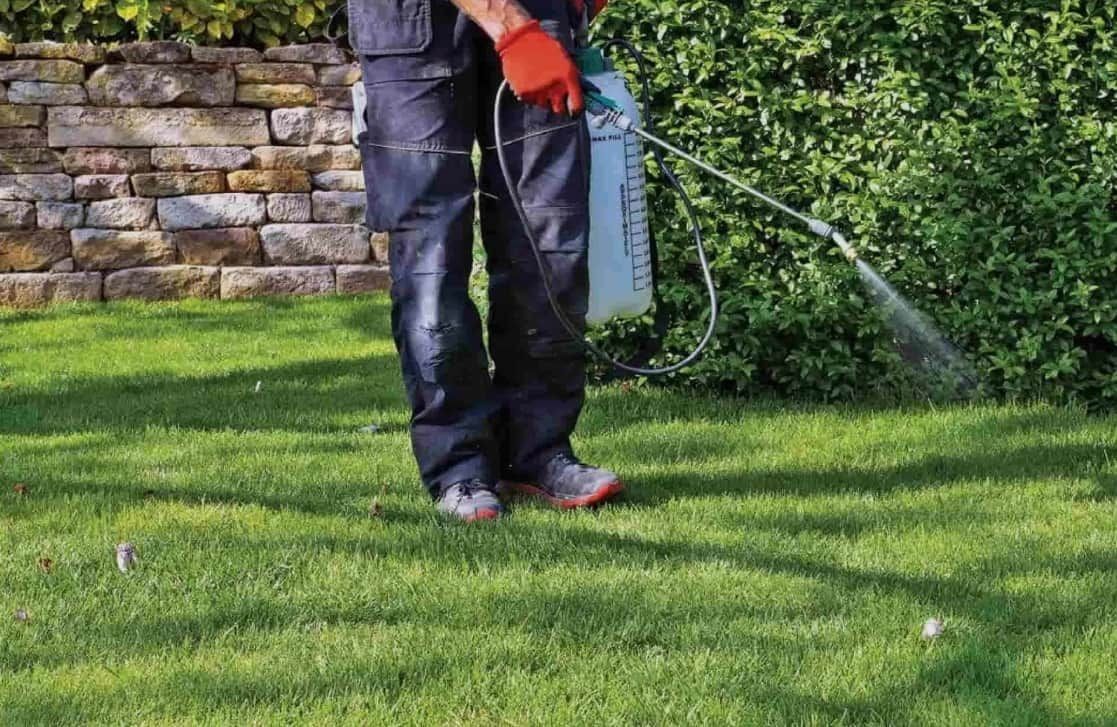Lawn Care Guide
Why Choose Us?
Our family owned and operated business has been supplying and installing lawns since 1995.
Nearly 30 Years Industry Experience
High-Quality Turf & Landscaping Supplies
Locally Owned & Community Focused
Expert Advice & Tailored Solutions
Friendly & Personalised Customer Service
Book a Free Measure and Quote
Watering & Mowing
Your lawn is an investment in your property, so you want to take the best care of it! But new turf owners are often overwhelmed by when to mow new turf and how often to water it. Rest assured, the team at Ryans Turf in Nowra will be with you every step of the way, providing advice and after sales service that is second to none! On this page, we have detailed the best practices for taking care of your turf.
When to Mow New Turf
Plan to wait about six weeks after you have new turf laid before mowing. Give the turf a chance to take root before you introduce the mower.
How Often to Water New Turf
If you’ve just had new turf laid, you’ll want to do deep watering every day for the first few weeks. Ensuring the soil always stays moist will help your turf develop a deep sturdy roots system.
Once established, Turf variety also plays a role in watering. For instance, if you’re wondering how often to water Sir Walter lawn, it will require less consistent water than Kikuyu grass. You can learn what’s best for your turf type by talking to the experts at Ryan's Turf.
Your New Grass Checklist
If you’re in the market for new turf, be sure to contact our team at Ryans Turf. We'll help you choose the perfect grass for your property. Our turfing experts have a long list of characteristics to consider and will look at your property as a whole to determine what turf will work best for your lawn. The following are some of the main factors we will discuss with you to help you make the best choice:
- Drought & Wear Resistance: Consider the level of drought and wear resistance that you require for your lawn.
- Shade Tolerance: If your property has areas with limited sunlight, it’s essential to choose a turf variety that can tolerate shade. We will help you make the right selection.
- Soil Type: The type of soil used at your property can influence the success of your turf installation. We will make sure your soil is conducive to the healthy growth of your turf.
- Texture: The texture of your turf can impact the overall look and feel of your lawn. We'll ensure your turf has the best possible feel.
- Mowing Schedule & Height: To help you maintain the optimal health of your turf, we'll advise the appropriate mowing schedule. We'll also recommend the maximum height your turf should grow to.
- Invasive/Non-Invasive Properties: Some turf varieties can invade garden beds and other areas, while others are non-invasive. We’ll make sure your turf doesn’t incur on other areas of your landscape.
- Winter Colour: The winter colour of your turf can impact the overall appearance of your property during the colder months. We'll do all we can to ensure the winter hue adds to your overall aesthetics.
- Growth Rate: The growth rate of your turf can impact how often you need to mow your lawn and the overall maintenance required. If you want a low-maintenance turf, we'll recommend the most appropriate type.
What is the Process for Installing New Turf?
To ensure your new turf is installed in a way that is aesthetically pleasing and conducive to healthy growth, we provide the following:
- Site Preparation: We prepare the site by removing old vegetation and debris, levelling the soil and applying fertilisers. Our team can also apply soil conditioners to encourage healthy growth.
- Turf Delivery: We deliver fresh, healthy turf directly to your property, ensuring it is ready to be installed immediately.
- Installation: Our team of experts carefully install the turf, ensuring it is laid for long term results and the seams are well blended.
- Watering: After installation, we water the turf thoroughly to help it establish roots and encourage healthy growth.
Lawn Weeds & Turf Protection
Even in healthy established lawns, weeds can emerge. Thankfully, once the weeds are correctly identified, Ryans Turf can offer expert advice on the most effective selective weed killer or treatment to use without damaging your lawn. Here’s a list of common lawn weeds in Australia and identifying characteristics.
Grass Weeds
- Nutgrass
- Perennial, grass-like weed
- Unjointed stem, triangular or v-shaped in cross section
- Thick, stiff leaves
- Summergrass
- Annual weed with soft, hairy leaves
- Fibrous roots
- Grows close to the ground
- Crowsfoot grass
- Annual grass-like weed
- Roots at the nodes
- Seedhead has five or more spikelets that point outwards
- Paspalum
- Quick growing grass
- Found in wet areas
- Underground stems and flat leaves
- Winter grass
- Pale green colour
- Smooth leaves
- White, soft root zone
Broadleaf Weeds
- Capeweed
- Annual, short stemmed herb
- Petals are yellow on the top and grey/green on the bottom
- Deeply lobed leaves with rounded apex
- Carrot Weed
- Forms a rosette of leaves and then flowers
- White coloured taproot with erect stems and branches
- Crowsfoot grass
- Bindii
- Forms a rosette of leaves with a flower head in the centre
- Flower head grows burrs and sharp spines
- Oxalis
- Heart shaped leaves
- Brightly coloured flowers
- Chickweed
- Forked stems with small hairs
- Broad leaves with pointy tips
- Small, white petals on flowers
- Clover
- 3 Leafed bright green
- White crescent shaped flower
- Creeping ground cover
Do you recognise any of these weeds in your lawn? Get in touch with the lawn care experts at Ryan's Turf to discover which weed killers and fertiliser blends can keep your lawn healthy and the weeds at bay!
Lawn Pest & Bug Protection
Are you trying to get rid of pesky grubs in your lawn, soil or in the garden? Unfortunately, from spring through to autumn in NSW, it is prime time for lawn grubs to invade your lawn. To help protect your lawn from damage due to grubs in the soil, Ryan's Turf put together this guide to grubs and pest control.
How to Spot Grubs in Lawn, Soil and Garden
Got grubs in your garden? Early detection is critical in preventing the grub population from exploding and ruining your lawn. Thankfully, many indicators can help you spot lawn grubs early on:
- Brown or grey patches of grass.
- Spongy ground.
- Birds on your lawn. Birds feeding on the grubs can damage your grass too.
- White egg sacs on grass blades, leaves, outdoor furniture and other surfaces.
- Wasps in your yard. Wasps use grubs as hosts for their eggs.
- Short grass patches throughout the lawn.
How Do Lawn Grubs
Damage Your Lawn?
A lawn grub infestation can kill your entire lawn, especially if you don’t catch it early. During the larval stage, lawn grubs eat your grass's roots, leaves stems and other plants. Depending on the size of the infestation, this can eradicate the entire root system of your lawn or leave you with dead, dry patches.
Once the larvae develop into adult beetles and moths, they lay eggs on healthy grass and other outdoor surfaces. Then, the cycle of damage begins again.
Common Lawn Grubs in Australia
Australia is home to several kinds of damaging lawn grubs, including:
- African Black Beetle
- Armyworm
- Argentinian Scarab
- Sod Webworm
Depending on which kind of lawn grub is infesting your lawn, various products are available to deal with them at the first sign. You should also keep your lawn healthy with fertiliser and a consistent watering schedule to minimise damage.
Please also remember that not all grubs, beetles & insects are harmful to your lawn! In fact, some are quite beneficial which is why the correct identification of your visitors is essential in maintaining ecological harmony in your yard.
Real Local Customer Reviews
Ryans Turf exceeded all expectations, providing an exceptional service that transformed our outdoor space. From the initial consultation with Peta, to the final installation, their team showcased professionalism and expertise. The quality of the turf they delivered was outstanding, lush and vibrant, instantly enhancing the aesthetics of my lawn.
What truly set them apart was their attention to detail and commitment to customer satisfaction. Ryans Turf not only delivered a superior product but also offered invaluable advice on maintenance, ensuring long-term success. I highly recommend Ryans Turf for anyone seeking top-notch service and premium turf solutions
Jason Miller
5 days ago

I have been using Ryans Turf for many years now on our local landscaping projects in the Nowra Region. The turf is always great quality and the service is amazing. I could not recommend more highly!
Brian Cooper
10 days ago

Thank you to Ryans Turf. Jackie was very helpful and knowledgeable when we purchased our Sapphire turf as we were advised great for kids to play on. It made it easy for us to drive from Nowra as we placed our order over the phone and they cut it that day for us to pick up in the afternoon. The grass was so fresh, lush and thick. Thank you so much. Mark and Kel.
Sarah Martinez
3 days ago

I am so impressed with the whole team at Ryans Turf Nowra. I requested a quote for 40m2 of Kikuyu Turf and received a response from Jacqui within the hour, along with a very competitive price.
I confirmed my order with a very jovial and helpful, Peta, in the office and received the product within two days and at the precise time that I had been given. The quality of the turf is unbelievable. (Like it was just harvested on the day of delivery). The delivery driver could not have been more helpful. He had a very friendly manner and placed the turf exactly where I requested him to place it. Don't look anywhere else. These guys are great. Thank you.
Emily Thompson
2 days ago

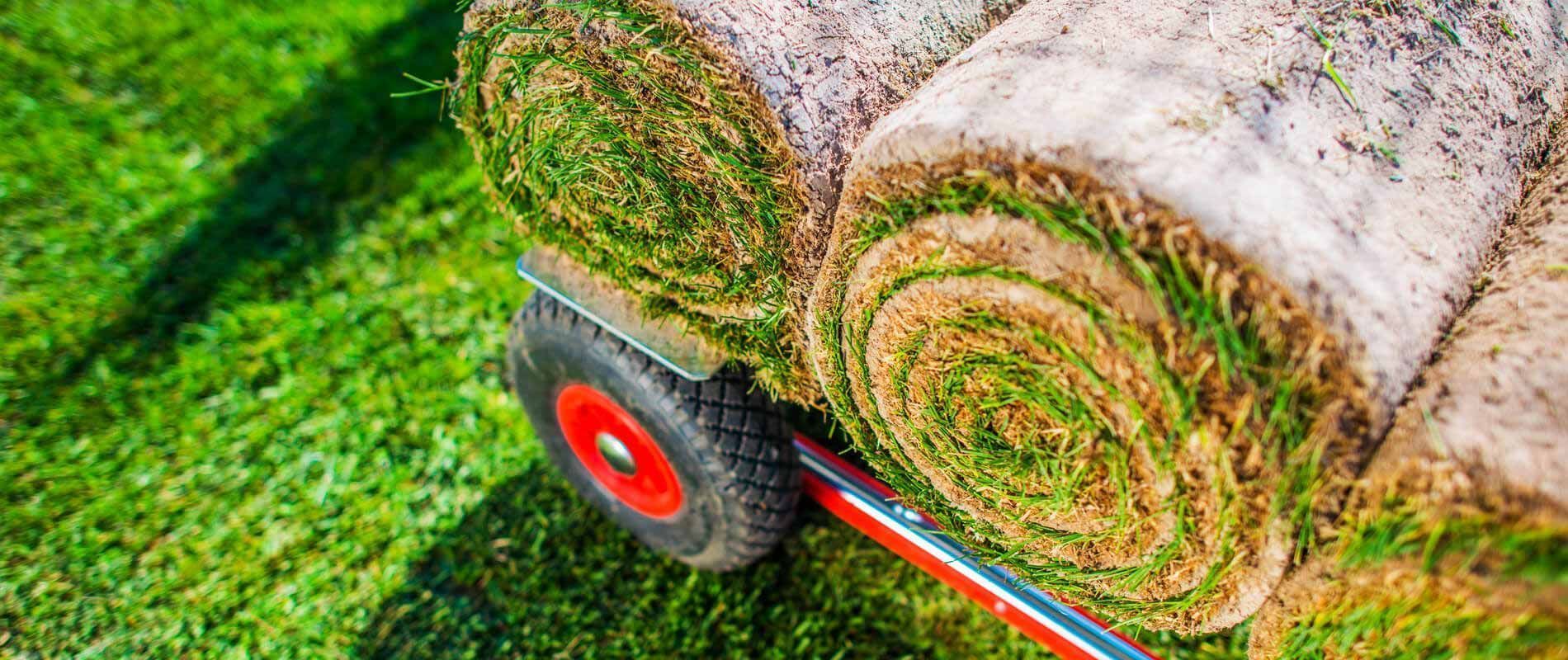
Frequently Asked Questions
When should I mow my new turf for the first time?
Mowing your new turf for the first time is an important step in establishing a healthy and robust lawn. It is recommended to wait until the turf has rooted firmly, which typically takes about 2-3 weeks after installation. A simple way to test this is to tug on the turf gently; if it holds in place without lifting, it’s ready for its first trim. Ensure your mower blades are sharp to avoid tearing the grass and only remove about one-third of the grass height to prevent stress on the new lawn.
How often should I water my new turf?
Proper watering is essential for the healthy establishment of new turf. Initially, water the turf generously twice a day for the first week to keep the soil moist and support root development. From the second week onwards, you can reduce watering to once a day and after the third week, reduce it further based on the weather conditions and soil moisture levels. It’s important to ensure the water penetrates deeply into the soil to encourage deep root growth.
Does the type of turf affect how often it needs to be watered?
Yes, the watering needs of turf can vary significantly depending on its type. Some varieties, like buffalo and kenda, are drought-resistant and may require less frequent watering once established. In contrast, types like bluegrass and fescue may need more frequent watering to maintain their health and appearance. Understanding the specific water requirements of your turf type is important for efficient water use and maintaining a lush, green lawn.
How do I choose the right turf for my property?
Choosing the right turf involves considering several factors, including climate, soil type, sunlight exposure and how the lawn will be used. For sunny areas, varieties like buffalo and palmetto grass are well-suited, while in shaded areas, turf types like sapphire may perform better. It’s also important to choose a turf that matches your lifestyle; for example, some turfs can withstand heavy foot traffic, making them ideal for family yards. Consulting with a turf professional can provide tailored advice for your specific conditions.
What should I do to maintain the optimal health of my turf?
Maintaining optimal turf health involves regular mowing, watering, fertilising and aerating. Turf should be mowed at the correct height and frequency for its type, ensuring you never remove more than 1/3 of the leaf blade at once. Watering should be done in the early morning or late evening to minimise evaporation. When it comes to fertilising, it’s important to do just what is necessary, as this can lead to an unhealthy buildup of nutrients. Instead, apply fertiliser sparingly and regularly and choose a product specifically designed for your turf.
How can I ensure my soil is conducive to the healthy growth of my turf?
Creating a conducive environment for turf growth begins with soil tests to determine the current nutrient levels and pH balance. Depending on the results, you should add organic matter like compost or specific soil amendments to improve fertility, structure or drainage. Furthermore, regular aeration can prevent soil compaction, improving water and nutrient penetration. Consider rotating high-traffic areas to avoid constant pressure on the same spot. Following these tips will help you create a productive soil environment for your turf.
